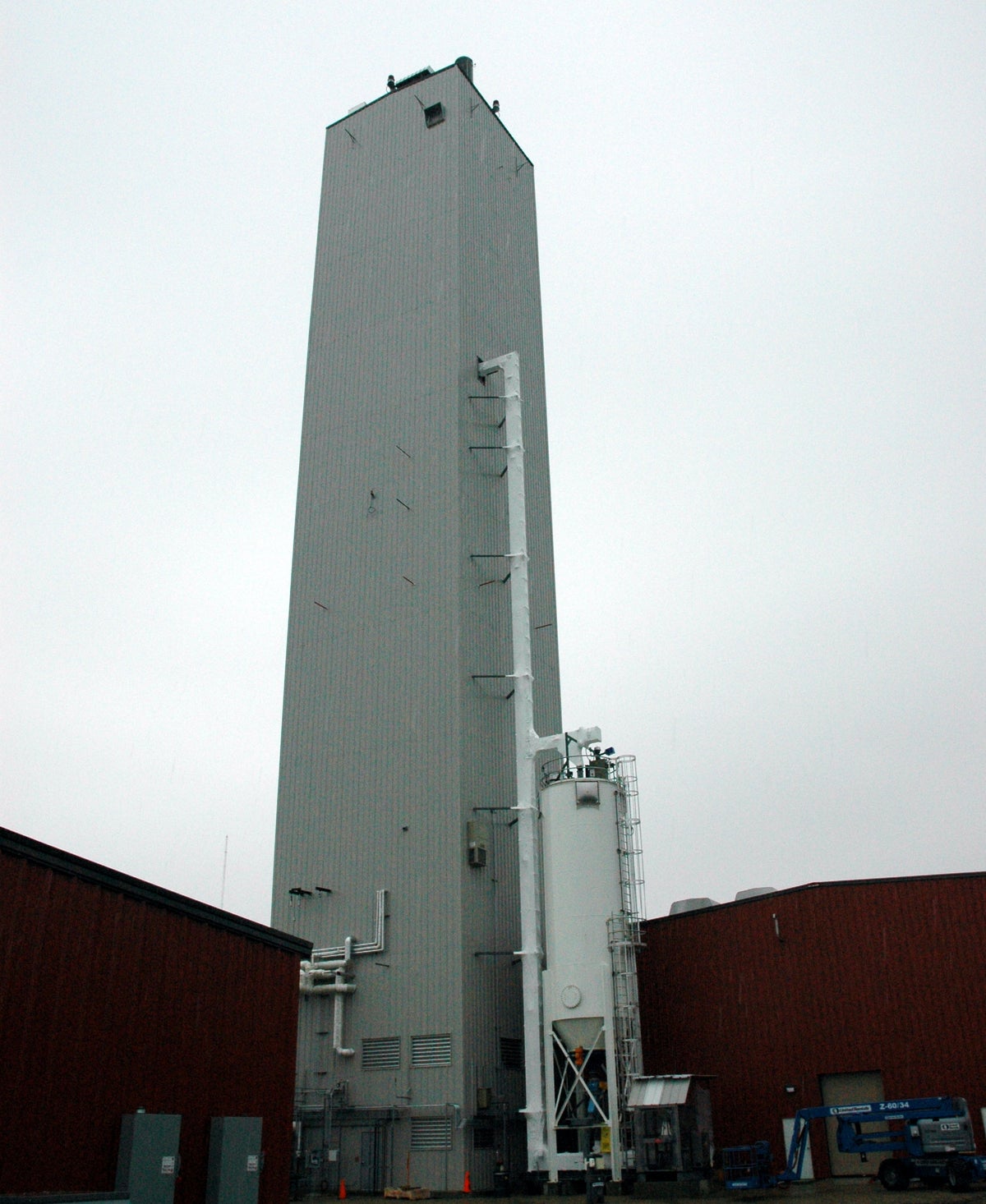Photos: Inside one company's quest to clean coal
A look at GreatPoint Energy's equipment to turn coal--the dirtiest of fossil fuels--into a cleaner fuel by making natural gas and capturing carbon dioxide.

Mayflower Clean Energy Center
On a spit of land at the mouth of the Taunton River in southern Massachusetts you'll see this tower. It's the Mayflower Clean Energy Center built by GreatPoint Energy to turn coal--the dirtiest fossil fuel--into cleaner-burning natural gas.
The 200-foot tower contains a reactor--essentially a long metal tube under high heat and pressure--where coal is mixed with steam and a proprietary catalyst. Inside the hydromethanization reactor, that mixture turns into gases and the residue is collected through that white silo on the right. The company is separating methane--the primary component of natural gas--and carbon dioxide, which the company plans to store underground.
Brayton Point crusher
How does the process work? We'll take you through the major steps of the facility, which is meant to replicate a commercial-size plant at smaller scale.
The first step is to collect and treat coal or other carbon-rich biomass, including petroleum coke, a bioproduct of extracting oil from tar sands.
Here at Brayton Point, GreatPoint Energy has this piece of equipment for crushing coal into a powder. Part of the trick in making an energy plant like this successful is the engineering, getting the equipment to work as designed, and to optimize the process for different feedstocks. The process can be tweaked to handle different types of coal, for example.
Silos
Reactor
At the heart of the operation is this long tube. The view here is looking up the 200-foot-high tower.
Inside this tube, the coal mixture is treated at high heat and pressure--a process called gasification--which creates a mixture of gases that are captured and separated. The residual feedstock is collected and recuperated at the bottom.
This hydromethanization reactor is not full size but is meant to replicate the conditions of a larger vessel. In the month of March, this operation treated 4,500 pounds of feedstock, according to plant manager Charles Powell, who has 30 years of experience in coal gasification research and development.
The main purpose of the demonstration facility is to gather data, which is why this reactor is equipped with several sensors to track variables such as temperature and pressure.
Dan Goldman and Charles Powell
Mezzanine
Recuperation
After being treated in the reactor inside, the gases travel up and then are piped down to be separated. The equipment on the side is used to isolate mercury, nitrogen, and sulfur. The plan is to sell these minerals for use in commercial products, like ammonia fertilizer or sulfuric acid. Apart from GreatPoint's gasifier, much of the equipment in the plant is off-the-shelf and already used in coal-fired power plants.
The purpose of the test facility is to work out the engineering to make the multistage process work. The output--natural gas--here is being flared rather than being shipped into a pipeline as a commercial facility would do. Similarly, the company isn't testing underground storage of carbon dioxide here.

